Hey, Curious305: Why are there large rooster sculptures in Little Havana?
Editor’s Note: This article was inspired by questions submitted from Miami Herald reader Julie and an Instagram user through Curious305, our community-powered reporting series that solicits questions from readers about Miami-Dade, Broward, the Florida Keys and the rest of the Sunshine State. Submit your question here or scroll down to fill out our form.
Hey, Curious305: What is the meaning of the rooster sculptures in Little Havana? Why are there so many rooster statues on Calle Ocho?
How do you know if you’re in Little Havana? Just look for a giant, colorful rooster.
The fiberglass birds began appearing along Calle Ocho and surrounding streets in 2002 as part of “Rooster Walk,” a project that aimed to build on efforts to celebrate the neighborhood’s culture.
The decision on a rooster theme came after neighboring Coral Gables placed huge flamingo statues on its streets, according to Rooster Walk creator, the late artist Pedro Damián.
Why does Little Havana have giant rooster statues?
“The rooster is a multi-ethnic symbol. Many countries claim it as a national emblem, and it’s one of the most beloved animals in the Caribbean, Latin America and Europe,” Damián told the Miami Herald in 2002.

Each rooster sculpture cost about $2,750, according to the Miami Herald archive. Empowerment Zone, a publicly funded agency that invests in low-income neighborhoods, paid for eight of the sculptures. Many businesses also commissioned rooster sculptures.
The sculptures came in two designs.
The original, a “traditional proud gallo,” was sculpted by the late Tony López, who had a 70-year career between Cuba and Miami. He contributed to the Holocaust Memorial in Miami Beach, and the Torch of Friendship and St. Mary’s Cathedral in Miami, according to Herald archives. His rooster figures were inspired by his pet rooster Pepe.
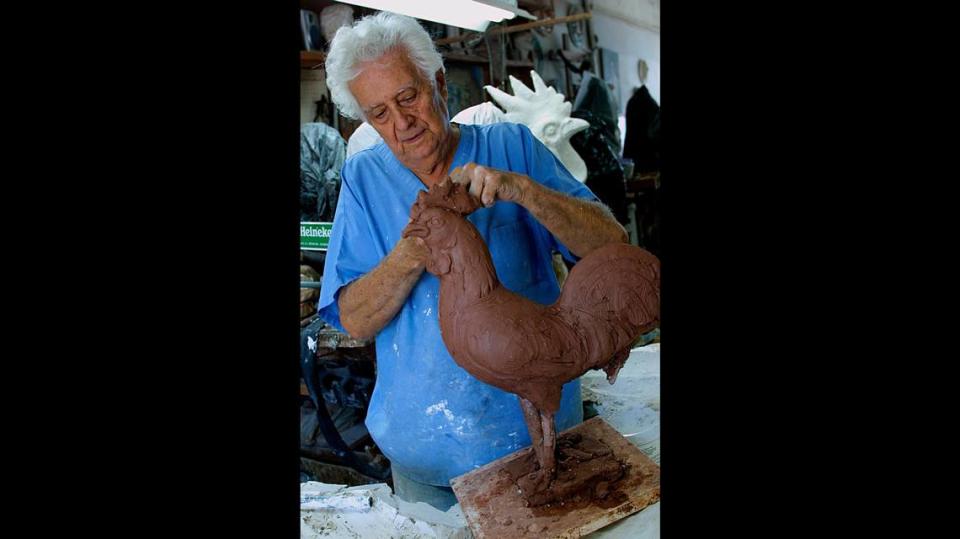
The other is a “feistier-looking cockfighting rooster” sculpted by the late Ramón Lago, who was also born in Cuba and moved to the United States. He became one of the youngest artists to exhibit at the National Academy of Design and eventually settled in Miami.
“My grandfather was a peasant from Las Villas who loved cockfights, and so did my father. I grew up among gallos de pelea, gamecocks,” Lago said in 2002.
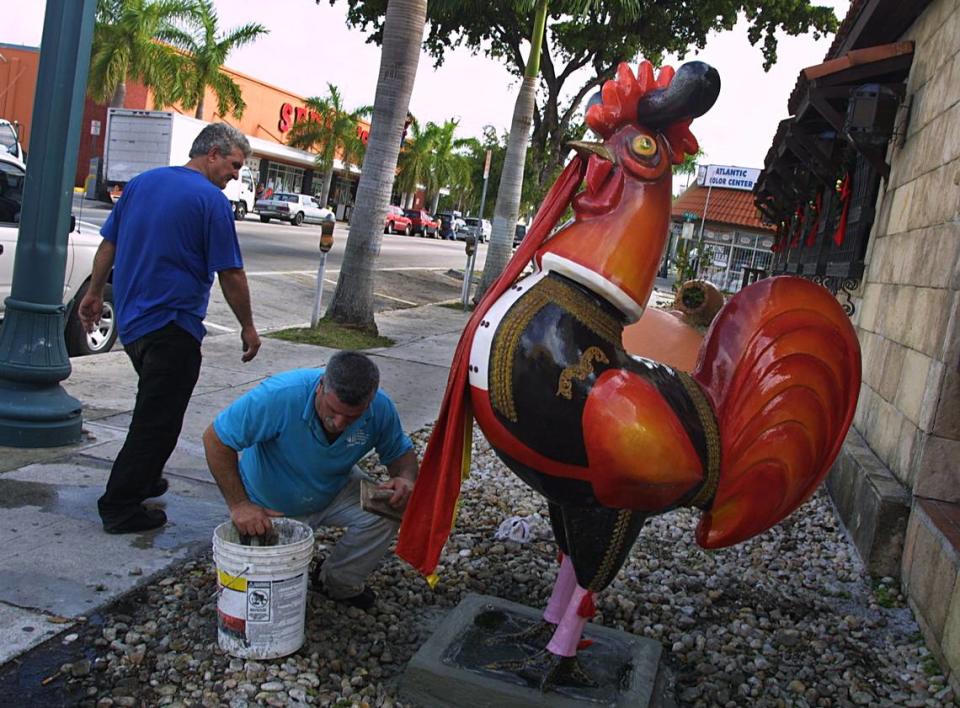
The bullfighter in front of Casa Juancho, 2436 SW Eighth St., is a Lago rooster. The rooster that was clad in a guayabera and straw hat in front of La Carreta, 3632 SW Eighth St., in 2002 was a López rooster.
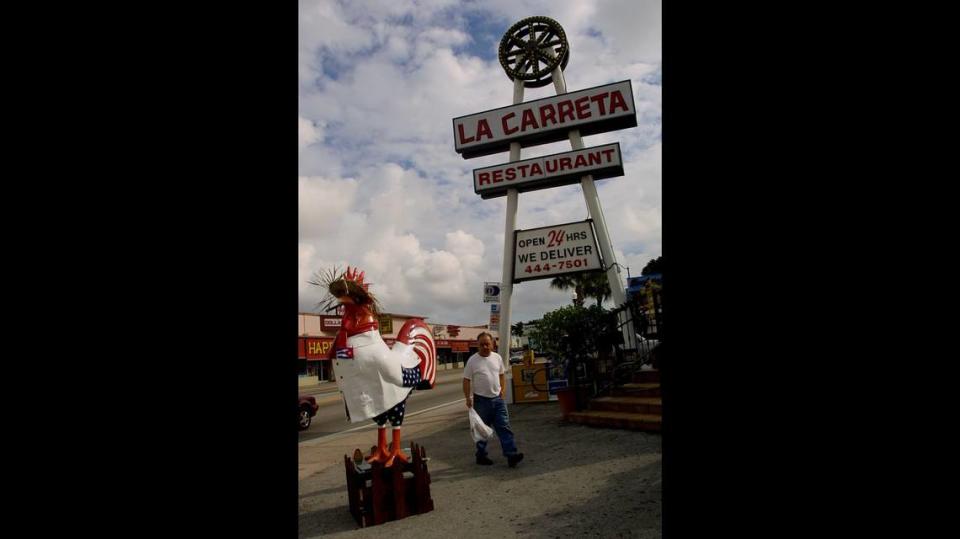
“Rooster Walk” led to the creation of more than 70 similar roosters, including a firefighter and an artist, according to the Herald archives. Businesses as far away as Canada and Puerto Rico also commissioned roosters.
The roosters are usually part of Little Havana sightseeing tours. The city of Miami last year used a rooster, which has the words “Calle Ocho” printed on it, in a Facebook ad about parking.
Little Havana rooster sculpture stolen, spray-painted
Their popularity sometimes made them targets of thieves and vandals. Victims included the 70-pound rooster that had been bolted to the street in front of the El Pub restaurant at 1548 SW Eighth St.
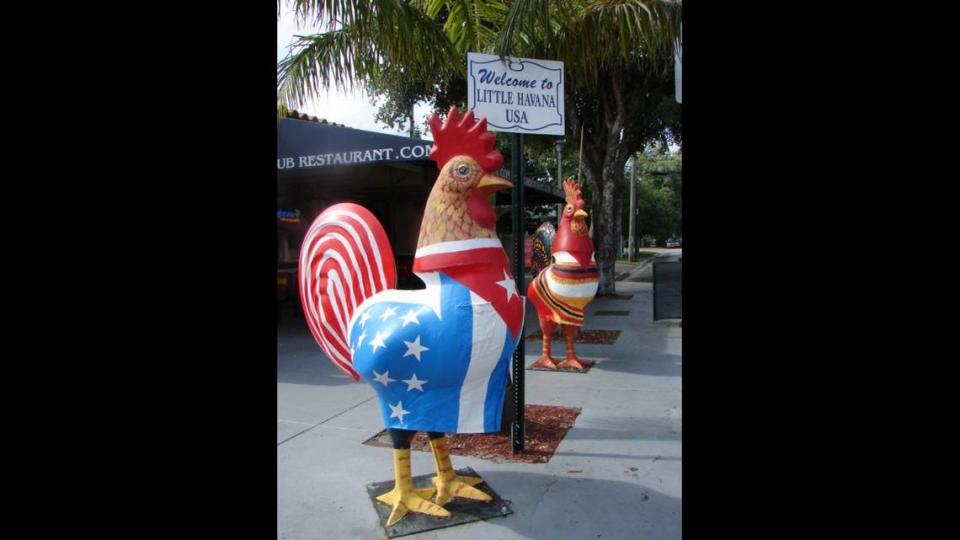
The rooster, adorned with the flags of the United States and Cuba, was stolen in September 2011. After nearly a week of being held hostage, allegedly by a group of partying college students, the kidnapped rooster was returned to a city office in Little Havana.
Pablo Cantón, the administrator of the office, painted roosters as a hobby and had also painted the sculpture’s flags himself. But the rooster’s artistic, patriotic flair was gone. Its entire body was spray-painted white.
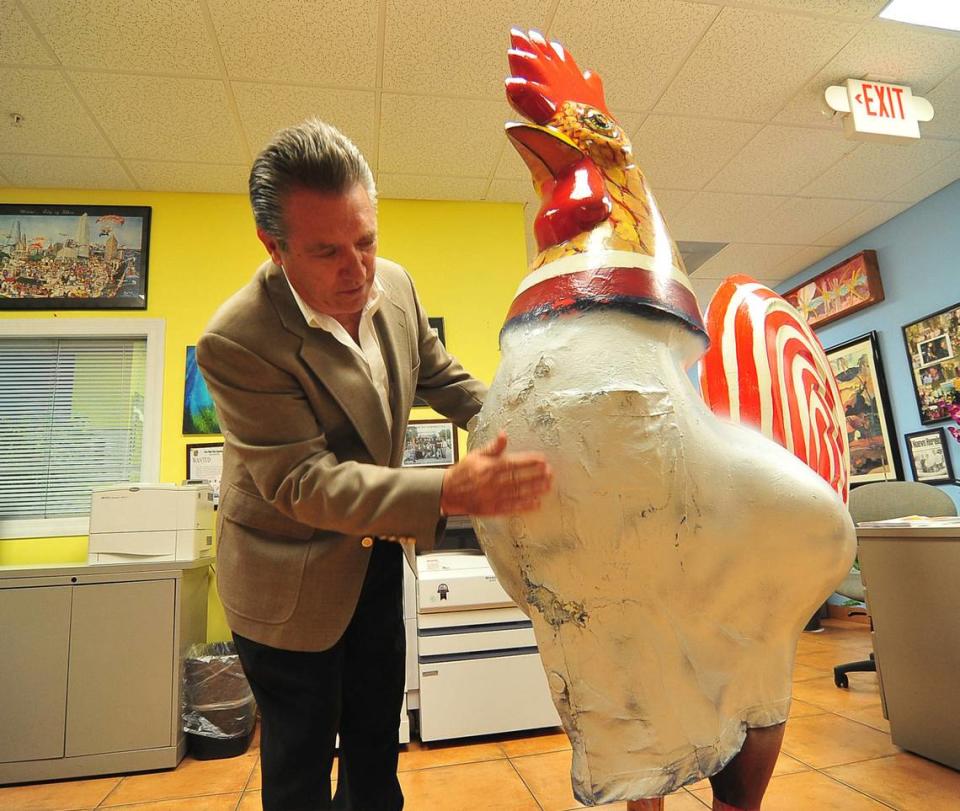
Cantón told the Miami Herald the kidnappers were a group of young guys and that they asked him to keep their identity a secret. He said they would have to pay the costs of repairing and reinstalling the six-foot rooster in front of El Pub, where it still stands today.
How many other roosters are still on display?
There are at least 12 roosters in the streets of Miami, including the one dressed as a bullfighter next to a hen, in front of Casa Juancho restaurant. A rooster still stands in front of La Carreta, though it’s not the same one that was there in 2002.
La Carreta’s other locations — in Westchester, Doral, Kendall and Pembroke Pines — also have roosters.
Rooster Walk: Symbol of Miami’s Little Havana neighborhood
While the sculptures are a popular attraction — selfies with the gallos are a must — getting “Rooster Walk” off the ground wasn’t easy.
“I spent eight months knocking on doors to find sponsors. At first, I got this kind of response, ‘Ugh, a rooster? The flamingos are OK, but not gallos,’ “ Damián told the Miami Herald in 2002.
But he found fans in Cantón, who helped him get sponsorship from the Empowerment Zone, and Miami City Commissioner Joe Sánchez, whose support of the project earned him his very own gallo on Calle Ocho.
“The roosters are simply gorgeous,” Cantón said in 2002. “Forget the flamingos. What fits in Little Havana is roosters.”
This article used reporting from a 2002 Miami Herald article by staff writer Fabiola Santiago and a 2011 article by former staff writer Melissa Sanchez.

 Yahoo Movies
Yahoo Movies 